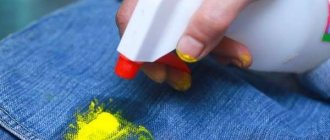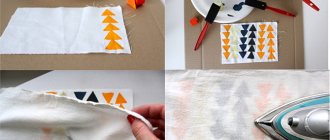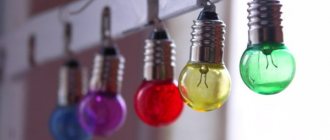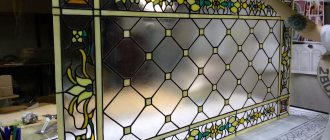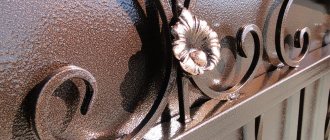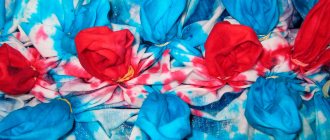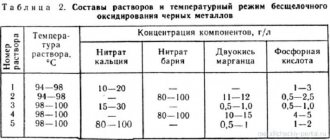I often have to use fabrics when decorating rooms. These are curtains, tablecloths, lampshades, napkins, even wall panels. And it is not always possible to find materials of the desired color and texture in stores. Therefore, I create them myself using special dyes and several application techniques. I am sharing with you how to dye fabric in the desired color or create a completely exclusive design on it.
Source websimages.com
What fabrics can be dyed
Natural fabrics are easier to dye than synthetics. Cotton, linen, silk, and wool absorb pigments well, but artificial fabrics cannot be dyed evenly.
Items with sequins, beads, inserts or embroidery may look sloppy after dyeing. Therefore, before the procedure, all accessories are stripped from clothing, since metal, plastic and wood react to dyes.
Light fabrics can be given any shade, dark fabrics can only be given more intensity. If you are going to repaint a black item, you first need to bleach it and only then paint it.
If things often shed during washing, you may not be caring for them correctly. To keep your favorite clothes looking longer, take them to the dry cleaner: specialists will select effective cleaners that will not spoil the color of the fabric.
Variety of Applications
Fabric dyeing is in demand in textile manufacturing and in the fashion industry. Fashion stimulates the development of new clothing models and color solutions.
Dyes are widely used to add variety and revitalize interior items. The color and pattern of upholstery, curtains, and tablecloths can be changed to add zest, create coziness and comfort. Such an interior often becomes a source of special pride for the owners.
The purely utilitarian purpose of painting textiles is to give new life to faded and shabby items. It is in this case that the greatest difficulties should be expected. Uneven color and thickness of the fibers of the product results in the paint being absorbed unevenly. You need to know at least in general terms the characteristics of various pigments and fabrics in order to avoid a fiasco.
Artificial colors
Choose special textile paints - they are waterproof and penetrate deep into the fibers. Before buying a product, determine the type of fabric by touch or read the composition on the tag. If you plan to dye the item completely, powders, pastes, aerosols or liquid dyes are suitable for you.
If you need to hide a stain on something, use markers, outlines and stencils. They are available in craft stores or in Ozon, Wildberries, AliExpress. Find a product that matches the fabric and carefully paint over the stained area.
It is not recommended to dye bed linen and children's clothes so as not to provoke allergies.
Acrylic paint
This paint is very dense, so it is only suitable for drawings. Sold in different formats and colors: pearlescent, fluorescent, neon, silver, gold, metallic and others. For a glossy effect, dilute acrylic paint with a special solvent, for a matte effect - with water.
Acrylic can be mixed to create the desired shade and used spot-on to hide fabric imperfections. This paint is suitable for any materials. It is plastic, moisture resistant, without a pungent odor, dries quickly and is fixed in texture. To fix the pattern, you need to iron the fabric from the wrong side.
O means that the paint is suitable for thin fabrics, “Textile” is only for thick ones. Famous brands: Nevskaya palette “DECOLA”, Gamma, Marabu, Tair.
Powder paint
It dyes natural fabrics well, so it can be used to completely color an item. If you add a little soda and urea to the powder, the paint will remain in the fibers of the fabric for a long time. To do this, dilute 20 grams of powder, a tablespoon of urea and half a teaspoon of soda into 0.5 liters of hot water.
How much paint you need for the job depends on the color saturation. Instructions may vary from manufacturer to manufacturer, so follow the directions on the powder packaging.
You need to use it carefully so as not to stain everything around it - it is loose and scatters. Famous brands: TextileCare, Simplicol EXPERT, IDEAL.
Aerosol paint
Synthetic fibers repel aerosol, and cotton, linen, wool, and silk absorb this paint well. To ensure that the paint penetrates deep into the structure, stretch the fabric and only then spray the aerosol. You must also follow the rules for caring for a dyed item: do not wash it in hot water and iron it only on the wrong side.
Use the paint in a ventilated area and wear a mask before use. Famous brands: Marabu Textil Design, Lilac Fabric Design.
Popular paint manufacturers
Manufacturers of acrylic paints:
- "Decola";
- "Delon";
- "Simplicol";
- "Marabou";
- "Pebeo";
- "Javana";
- "Gamma";
- "Pigment Acrylic";
- "Surf";
- "Ideal".
Lumier has gold and silver dyes that give a metallic effect.
St. Petersburg Decola paints are the most popular among batik artists. Sold individually and in sets. Additionally there are brushes, solvents, contours. The average cost is 110 rubles per 50 ml jar.
- French manufacturer. Their textile dyes are easy to use and safe. An additional assortment is represented by brushes, solvents, and stencils. The average cost is 300 rubles per 45 ml jar.
German offers a wide range of products. They have a lot of pigments of different colors, brushes, applicators, stencils. Pigments are convenient for drawing small details. To fix the color, just iron the item with an iron. The average cost is 70 rubles per 20 ml jar.
The pigments are suitable for coloring natural and synthetic materials. They are easy to use, even when painting by hand. Gives a rich color. The average cost is 70 rubles per 20 ml jar.
Screen printing inks are water-based. Light colored material should be dyed. The average cost is 130 rubles per 50 ml jar.
Folk remedies
This is a convenient and budget-friendly way to give the desired shade to things made from natural light fabrics: you can refresh gray kitchen towels.
Coffee
. Any coffee is suitable for tinting fabric. Brew the drink in a Turk or prepare an instant drink. The stronger the drink, the more intense the color, so you can get shades from beige to dark chestnut. Immerse the fabric in coffee for half an hour, and then rinse the material with a vinegar solution (2 tablespoons per 5 liters of water).
Tobacco.
The principle of processing fabric with tobacco is the same as with coffee. Add tobacco to a pan of water at the rate of 15 grams per liter, boil and dip the cloth in it. The longer you keep the material in the solution, the richer the shade you will get.
Black tea.
Brew tea to get the desired shade and soak the item in it. A strong drink will color the fabric in darker tones, a weak brew will turn it yellowish or beige. This method is usually used to refresh brown clothes and flesh-colored items.
Onion peel.
It needs to be cooked for about three hours and then allowed to brew. Next, strain the solution and immerse things in it. The shade will range from yellow to brown.
Zelenka.
Persistent and corrosive aniline dye: the more brilliant green you add to the water, the more intense the shade will be. You need to leave things in the warm solution for half an hour.
Potassium permangantsovka
produces pink and purple colors. Dilute potassium permanganate in water and leave the fabric in the solution for an hour for complete staining. You can use an analogue of potassium permanganate - fucorcin.
Blue
refreshes the color of jeans and gives a blue tint to light-colored items. It is produced in the form of powder and liquid. For light coloring, 5-10 minutes of soaking is enough, for complete coloring - 2 hours. What other shades can you achieve:
- Red
- hibiscus, beet juice, blueberry, cherry, cranberry, strawberry. - Copper, yellow, orange
- turmeric, iodine, decoctions of oak bark, pomegranate peel, orange zest, wormwood, calendula, sea buckthorn juice, carrots, henna. - Light green
- decoctions of mint, spinach, apple leaves.
How to preserve the pattern when painting things
Dye fastness is used to describe the ability of a color to resist fading or bleeding. The main forms of fastness are wash fastness, the ability to better retain patterns when dyed, light fastness, and abrasion resistance, as fabrics tend to fade with repeated washing, exposure to both ultraviolet and visible light, and friction.
The right fabric dye will ensure better color fastness. To ensure that a painted item retains its color, it must not be dried.
Working with clothing paint is not difficult. It is enough to choose a product for a specific fabric and purpose, read the instructions and do everything carefully.
walk in the sun. It's also always worth using a color fixative. When washing, it is better to use a gentle or special powder for colored items.
Dyeing clothes
To dye fabric, choose one of the techniques:
- Airbrush - painting using a spray can or airbrush.
- Shibori, tie-dye, plangi - knot painting. Before immersing the fabric in paint, it is pulled with threads, twisted, tied into knots and the folds are fixed with clothespins.
- Hot and cold batik. Patterns are created with hot wax or a special compound and the item is filled with dye. The areas where there was wax are the drawing, the painted areas are the background.
- Free painting.
- Boiling or soaking.
Preparation
Even new clothes need to be washed and ironed before painting. This will smooth out the fibers and allow the color to lie evenly. An exception is the tie-dye technique, in which the item, on the contrary, is crushed and twisted. The fittings and lining cannot be dyed together with the fabric. Pockets must be empty. When using any paint, read the instructions carefully so as not to damage the fabric.
Inventory
For partial staining you will need:
- brushes;
- cotton buds;
- a temporary pencil or self-disappearing sketch marker;
- stencil or copy paper;
- paper tape for a clear outline or fixation of the stencil;
- sponge if you need to shade the paint;
- wax, paraffin for batik;
- a hoop or sheet of thick cardboard to stretch the fabric;
- iron.
For full coloring:
- basin or pan;
- gauze or colander for straining broths;
- gloves, tweezers or wooden sticks for turning the fabric.
General recommendations
There are certain recommendations for coloring:
- Paint each item separately.
- When you soak, periodically remove and dip again to properly paint the texture.
- The dye penetrates deeper into the fibers of the fabric in hot water, but after dyeing it is not recommended to wash things at high temperatures.
- In decoctions of leaves and berries, the fabric can be boiled for about 40 minutes.
- The seams are not painted over.
- Faded fabric easily absorbs dye.
- Stains interfere with dyeing - contaminated areas will differ in color.
- Natural dyes take longer to dye the fabric, and the color is unstable.
- After painting, the item should be rinsed well until the water becomes clear.
- When drying, woolen items are carefully laid out, otherwise they will stretch.
- Do not leave things in the sun for a long time so that the color does not fade again.
- Wash dyed items separately from the rest for a while.
Preparing for painting
Soak the material in cool water and leave for 1 hour. Then wash and rinse well, dry, iron if necessary.
How to properly prepare clothes for dyeing
- Remove oil and grease stains.
- Wash it.
- Remove buttons and decorations from clothing and unzip. If you have a new linen or cotton product, you will have to boil it in a soap solution with the addition of soda to remove starch. The wool yarn is loosely twisted to prevent it from intertwining. Fixed with a rope.
Selecting containers and equipment for coloring
Take enameled or aluminum containers without soot and scale. The product to be painted must fit freely without protruding. Prepare wooden tongs for stirring. To soften the water, add soda.
CARRY OUT ALL PAINTING WORK WITH RUBBER GLOVES.
Features of dyeing various types of fabrics
Be sure to take into account the characteristics of the material.
Cotton, denim, linen, viscose
:
- They fade quickly and may fade, so choose permanent dyes.
- Dye in soft water - to do this, add a little soda to it.
- Can be painted by boiling, soaking and various paintings.
Wool:
- Soak the wool for 15 minutes in warm water in advance to soften the texture.
- Natural decoctions or fucorcin, blue, brilliant green and ready-made powders are suitable for coloring.
- The water for soaking should not exceed 70 °C, and wool should not be boiled.
Silk:
- You can paint in any way and means.
- Before dyeing, soak the item for 10 minutes in water with ammonia - 1 tablespoon per 2 liters of water. This will remove repellent antistatic substances from the silk.
- To fix the color and add shine, rinse the silk item in cold water with vinegar at the rate of 1 tablespoon per liter of water.
Synthetics:
- Permanent and uniform coloring can only be achieved with special means - Janava, Jacquard, iDye Poly, Batik-acrylic, RIT paints.
- Fix the paint with an iron carefully so as not to burn the item.
Briefly about the main thing
All natural and semi-natural fabrics lend themselves well to dyeing at home with acrylic, aniline and natural dyes. Before you dye synthetic fabric, you need to take a small piece and experiment. The easiest way to work is with acrylic paints - you don’t need to prepare the solution for a long time, heat it, or try to fix the color. A completely painted or painted item can simply be ironed through gauze after drying.
Question
Write in the comments, do you like designer items made from hand-dyed textiles?
Preparatory work
Before applying a dye, for example, spray paint for fabric or any other, it is first important to properly prepare the material:
- clothes are washed, especially if there are stains of grease or dirt on them. After washing, it is not necessary to dry the fabric; paint adheres better to wet fabric;
- All accessories are removed from the item so that they do not become stained;
- It is advisable to first weigh the clothes in order to know for sure how much dye mixture will be needed, for example, how many cans to buy.
How to paint material in bright colors
As a rule, the most vibrant colors can be achieved by using berries as dyes.
Blackberries will give red, blueberries will give purple, cherries and cranberries will give pink. A beautiful blue color can be obtained from regular red cabbage. The painting process is a real creativity; in addition to the quantity and composition of coloring substances, the final result is influenced by: the volume and temperature of the coloring composition, the hardness of the water used, and the exposure time. The main thing is not to be afraid to experiment, and everything will certainly work out.
Why do you need a pocket in women's underpants?
What are cowardly dodges
Azo dyes (cold dyeing).
Dyeing with azo dyes occurs by forming the dye directly on the fiber by combining its two components: the azo component (azotol) and the diazo component (amines) according to the following scheme:
diazo-component azo-component dye.
When dyeing with azo dyes, the fabric is pre-impregnated with an alkaline solution of the azo component at a temperature of 60-70°C. After drying, the nitrided fabric is passed through a cold (ice) solution of the diazo component. After spinning, the fabric goes through a maturing process, where the final combination of azo and diazo components occurs. After this, the fabric is washed and dried.

